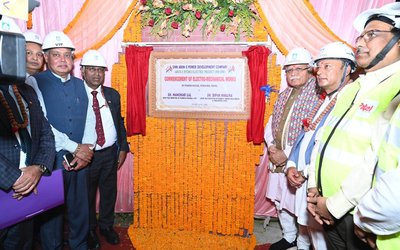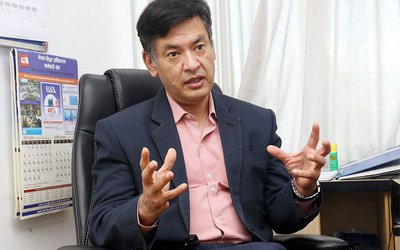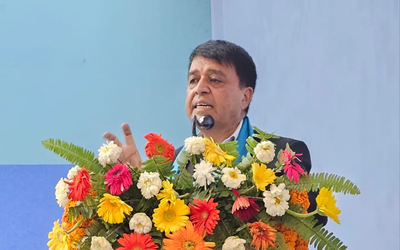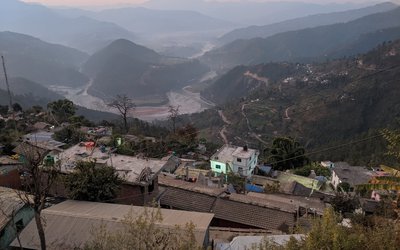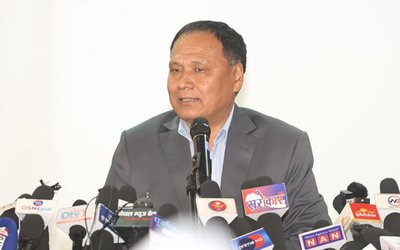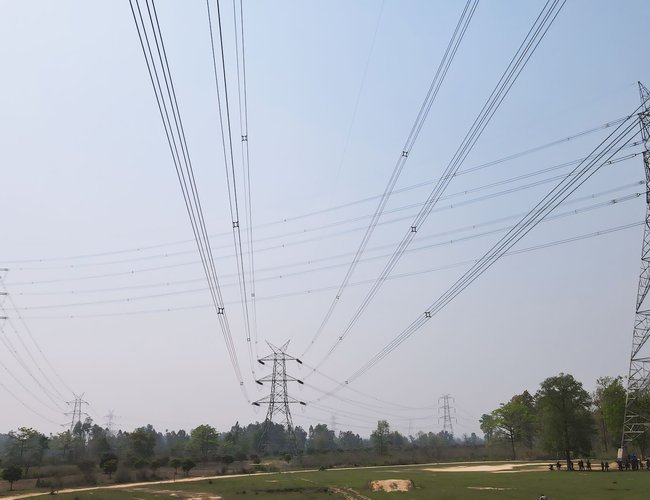
If Nepalese political leadership can establish trust with Indian leadership, Nepal stands to benefit greatly from India's increasing demand. Thanks to a goodwill gesture from Indian Prime Minister Narendra Modi, Nepal is profiting significantly from trading electricity with India.
India is allowing Nepal to export its surplus energy and avoid wastage, enabling Nepal to sell its excess electricity to the Indian market for five seasons. As per the Nepal-India agreement, Nepal has the potential to export up to 10,000 MW of energy to India.
To realize the goals set by the political leadership, it is essential to have dedicated and competent individuals at the execution level. Kul Man Ghising, the Managing Director of NEA, along with officials from Indian trading and utilities, have played a crucial role in countering a negative narrative aimed at tarnishing India's image.
By exporting electricity worth Rs. 13.04 billion in the first five months of the current fiscal year, NEA has demonstrated the significant opportunities in India for Nepalese electricity.
According to NEA, approximately 1.76 billion units of electricity valued at Rs. 13.04 billion were exported to India from July 16 to December 15, 2024, in the current fiscal year 2024/25.
The NEA has been exporting surplus electricity to India during the rainy season for the past few years, with an average rate of Rs. 7.39 per unit.
The surplus electricity is sold at competitive rates in the day-ahead and real-time markets of the Indian Energy Exchange (IEX) and to the states of Haryana and Bihar under bilateral medium-term power sales agreements.
The transactions are conducted in Indian rupees, resulting in an income of IRs 8.15 billion for the Authority during the review period.
The highest electricity export revenue was Rs. 4.15 billion in the month of Shrawan (July 16 to August 16), while the lowest was Rs. 281.4 million in the month of Mangsir (November 16 to December 15). In Bhadra (August 17 to September 16), the NEA exported electricity worth Rs. 3.68 billion, followed by Rs. 3.07 billion in Ashoj (September 17 to October 16) and Rs. 1.87 billion in Karkti (October 17 to November 15).
The Managing Director of NEA, Ghising, stated that the export of electricity was impacted primarily by the damage to the 456 MW Upper Tamakoshi Hydropower Project caused by floods and landslides in the last week of September. Power generation from the hydropower project was halted on September 28.
He explained that electricity exports declined in the subsequent months due to the closure of Upper Tamakoshi and the decrease in power production from other hydropower projects as the dry season began. Consequently, power had to be imported earlier this year compared to last year to meet domestic demand.
Currently, electricity exports have ceased, and imports have commenced, he confirmed.
As winter approaches, the electricity generation from hydropower projects is decreasing due to reduced water flow in rivers and streams. Therefore, electricity will need to be imported during the winter months to fulfill domestic electricity requirements.
He mentioned that once water flow in the rivers increases, electricity exports will resume. Additionally, starting this year, 40 MW of electricity has been exported to Bangladesh through India.
The NEA stated that a target of approximately Rs. 30 billion has been set for electricity exports in the current fiscal year. However, the export goal may be impacted by the damage caused to hydropower projects and transmission lines by floods and landslides. The floods and landslides specifically affected the Upper Tamakoshi and other small hydropower projects, as well as the Kabeli Corridor transmission line.
The flood in Maikhola resulted in damage to the Kabeli Corridor, leading to a reduction in electricity production from projects connected to that line, totaling around 200 MW. This disruption in production affected electricity exports in October and November.
The reconstruction of the Upper Tamakoshi project is progressing and is expected to be operational by December 25. Additionally, the reconstruction of the Kabeli Corridor transmission line has been completed and is now operational. With the decrease in water flow in rivers and canals during winter, the electricity production from hydropower projects is expected to decrease, resulting in a gradual decline in electricity exports as production will focus on meeting domestic demand.
The NEA has so far received approval from India to sell 941 MW of electricity generated from 28 projects in the Indian market under the competitive market and medium-term power sales agreements.
If India had not permitted the sale of electricity, Nepal, with a surplus of over 1000 MW during the five-month rainy season, would have had to waste the energy, resulting in significant losses.
- TEACHERS ON STRIKE: Students' Future In Jeopardy
- Apr 25, 2025
- NEPAL-THAILAND: Joint Business Council
- Apr 13, 2025
- BIMSTEC SUMMIT: Nepal’s Stand
- Apr 11, 2025
- IME GROUP: Expands Into Paper Industry
- Mar 24, 2025
- CPN UML: Instigated By India
- Mar 23, 2025
